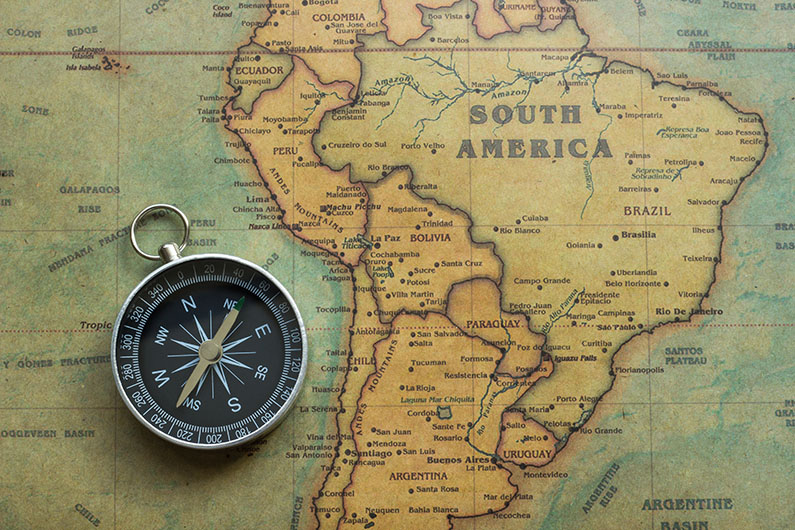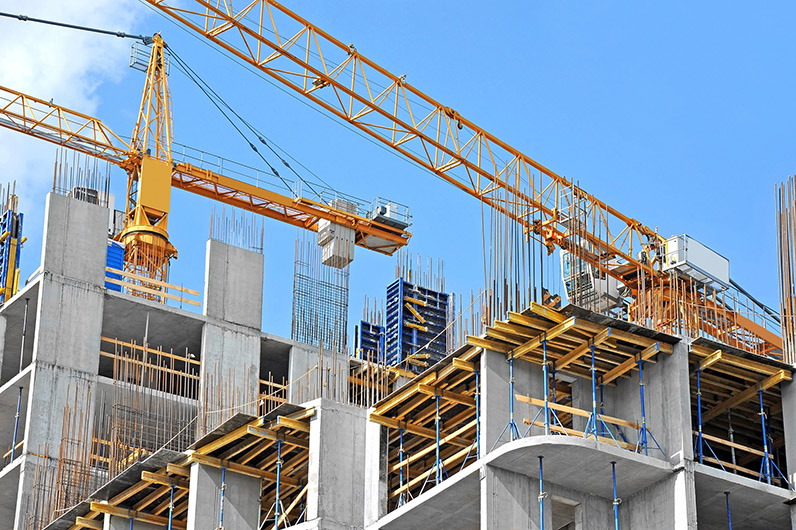More news
- Nigeria’s paint industry navigates regulatory changes and economic challenges amid p...
- Focus on the global coatings market: Global coatings market outlook
- View from the UK: Navigating chemical policy and sustainability
- Architectural coatings in Nepal and Bhutan
- Focus on adhesives: Unveiling unbreakable bonds – Testing redefines physical strengt...

Andreia Nogueira and Marîa Isabel Magaña report on how South America’s paint and coatings industry offers diverse national market fortunes
South America often eschews regional economic trends, with countries having sharply diverging fortunes, reflecting their contrasting economic interests and performance, as well as differing political records and policies. The paint and coating sector is not insulated from these trends and while global issues, such as the COVID-19 pandemic and Russia’s invasion of Ukraine affect all national markets and producers, in South America, the impacts are often manifested differently across the continent.
Brazil
Brazil is a case in point. The country is South America’s largest economy, with 216 million people, and last year (2022) was its paint industry’s second most successful (after 2021), with 1.65 billion litres of paint produced, according to Luiz Cornacchioni, Executive President at Brazilian Coatings Manufacturers Association (ABRAFATI – Associação Brasileira dos Fabricantes de Tintas). Production fell 4% compared to 2021, but 2022’s output was 4.9% higher than 2019, before the COVID-19 pandemic, he told PPCJ [1].
“Paint exports and imports are not very relevant in the country, representing less than 5% of total production,” since the country manufactures paints for all applications and it is technologically advanced, stressed Cornacchioni – with higher tech coatings generally made and consumed in Brazil.
The weaker performance in 2022 reflects price increases, which were pushed up by pandemic-related increases in raw material and shipping costs – important because “a large part of raw materials” for the Brazilian paint industry are imported, said Cornacchioni. And while inflation has weakened during 2023, being 4.61% in August compared to 8.73% in August 2022, interest rates remain high at 13.25%, amidst “exchange rate instability,” Cornacchioni said. Brazil paint sales are still expected to grow around 2% in 2023, yr-on-yr.
According to UK-based market research company Euromonitor International, in 2022, Brazilian Reals BRL9.3bn (US$1.8bn) worth of home paint was sold in Brazil, with a similar level of revenues (BRL9.2bn) expected in 2023.
As for market trends, Cornacchioni noted the sector is benefiting from: a trend to “take care of the house,” also boosting sales of furniture and appliances (which are often coated); increasing consumer confidence; and government programmes to reduce personal debt, such as the Bolsa Família programme under the centre-left government of President Luiz Inácio Lula da Silva, leave more spare cash for paint purchases.
Also, paint and coating sales growth has been encouraged by public and private investments in housing and commercial buildings, as have the post-COVID resumption of domestic tourism; the continued strength of agribusiness, growing in several regions; the return of the Brazil Growth Acceleration Programme for infrastructure investment; a regulation improving basic sanitation; and a recovery in vehicle sales, said Cornacchioni.
READ MORE:
Market report: Malaysia and Singapore coatings markets driven by housing demands
Such optimism has boosted industry investment. For instance, the Ohio, US-based paints and coatings manufacturer Sherwin-Williams increased its number of stores in Brazil by 30%, with 54 new outlets opening last year (2022) [2].
Furthermore, the sector is innovating and investing in sustainability, encouraging best green practices. In 2021, ABRAFATI launched a Sustainability Sector Programme, which offers a sustainability self-assessment system to manufacturers, “aligned with the most important international references,” said Cornacchioni [3].
PPG Industries, the Pennsylvania, US-based paints, coatings and adhesive manufacturer, is investing US$44M to upgrade five powder coating manufacturing facilities in the US and Latin America, including in Brazil, “to meet growing customer demand for sustainably advantaged products,” according to company notes [4].
Also, in June 2022, São Paulo, Brazil-based nanotechnology research firm Gerdau Graphene launched a “commercial additive for water-based real estate paint with graphene,” stressing this carbon-based material’s sustainability [5]. This new paint, C-Fix, offers gains in terms of “washability and can be used on concrete, cement, metal and asphalt floors,” among others, said a company note.
Argentina
The industry’s outlook in neighbouring Argentina is far less rosy, however. Besides ongoing international inflationary pressures, the Argentine industry has been dealing with annual inflation of 138% in September, a benchmark interest rate at 133%, a weakening Peso at US$1-ARS153 last October (2022) and ARS351 this October (2023), and a GDP contraction for 2023 of 2.5% forecast by the International Monetary Fund (IMF). An October general election is poised to deliver more political instability, with libertarian Javier Milei poised to claim the presidency, according to October opinion polls.
Alejandro Ovando, Director of IES Consultores, an economic consultancy in Buenos Aires, told PPCJ that the performance of the Argentine paint market “has been slightly declining over the last three years, despite the bounce observed during COVID-19,” when “electronic commerce flourished” and lockdowns led people to undertake home improvements. Local paint and coating production fell from 266,091t in 2018 to 250,384t in 2022, and sales have been declining since 2019, except in 2021, when they increased 8% in comparison to 2020, he said. This indicates a weak market, given Argentina only imports around 6–8% of its needs, mostly from Brazil. Paint and coatings imports represented nearly 15,600t in 2022.
Felipe Carreirão, Research Analyst at Euromonitor International, explained that during the pandemic, consumers started looking for cheaper prices, while companies began offering products in smaller packages. Sales online have kept increasing since the pandemic and therefore, companies and even producers have been trying to “generate brand loyalty” through several approaches, such as painting training online, he told PPCJ.
Aware of the latest trends regarding cost reduction (and the need to protect public health), Dutch multinational AkzoNobel has been promoting sales of Albacryl Rinde Más (launched in 2020), “a concentrated anti-mould interior wall paint that can be diluted with up to 30% water” and formulated to not compromise existing finishes “or create a need for additional coats,” said Carreirão [6]. Furthermore, hyperinflation led consumers to purchase more products, such as furniture, to avoid seeing their money losing value in the bank, added Carreirão.
Ovando also noticed Argentine consumers are choosing more “water-based paints” due to environmental concerns and because “they are easier to work with and have a low odour.” Moreover, he observed, textured coatings “continue their growing path, even for interior environments” in Argentina.
While Argentina is suffering economically, construction is continuing, said Ovando: “The market is once again refocusing on new units being built.” And here, sales of special paints and coatings for dry construction (using prefabricated elements such as galvanised steel profiles, plasterboard and fibre cement panels, assembled without the use of mortar or other wet materials), which speeds up the construction process and reduces execution times.
Looking ahead, with energy subsidies already being withdrawn from consumers and industry, while companies have been dealing with “increasing energy costs”, he said. Also, with the peso in poor shape, the difficulty in obtaining foreign currency is impeding materials imports, explained Ovando.
This has been worsened by continued high tariffs favoured by the outgoing Peronist government, stressed Carreirão: “It is often necessary to take legal action against the Argentine government so that you can import both finished materials and raw materials.” These interventionist policies may end following the election – but as of press time, the political future of Argentina still hung in the balance.
Colombia prioritises eco-friendly coatings
Colombia’s paint and coating industry is also tackling economic uncertainties, albeit not as intense as those in Argentina, and – like Brazil – it is prioritising eco-friendly products. While production has rebounded to pre-pandemic levels, the industry faces challenges such as rising costs.
“Inflation and supply chain issues have increased raw material prices,” said María José Isaza Baquero, of the paint and coatings sector director of Acoplásticos — the country’s industry association for plastic, rubber, paints, coatings, inks, fibres, and petrochemicals. Inflation in September was 10.99%, weakening demand.
This has combined with a significant slowdown in the housing construction sector. In the second quarter of 2023, Colombia’s overall construction sector added value fell -3.7% year-on-year (from +9.4% in 2022), according to the National Administrative Department of Statistics (DANE) [7]. Housing sales for January-June (2023) fell 53.3% year-on-year, according to the Colombian Chamber of Construction (Camacol). The slowdown, linked to high inflation rates (13.25% – high – but also not as bad as Argentina), economic policy shifts by the centre-left government of President Gustavo Petro and sluggish projected growth of 1.4% for 2023 (IMF figures), has dampened optimism in the industry.
“Revitalising Colombia’s construction sector is key to economic growth, with calls for reduced interest rates, enhanced government funding and faster project execution,” said Isaza.
In addition, President Petro’s position on restricting hydrocarbon exploration is challenging the industry due to potential supply issues with essential materials. Colombia relies heavily on hydrocarbon revenues, so this could “impact the broader economy, including key sectors like construction,” she explained.
“We’re transitioning to more sustainable solutions, such as water-based paints and incorporating more bio-based materials,” she said. Colombian paint companies now increasingly offer refillable packaging at designated locations and design containers for potential reuse as digesters. Emphasis is placed on water savings, efficient energy use and carbon neutrality, said Isaza. Additionally, the rise of digital innovations facilitates sustainability, particularly in developing coating formulas.
Acoplástico said in 2022, decorative paints led the Colombian market, capturing 62% of sales. Annually, each person in Colombia purchased about 3.21 litres of paint – 164 million litres countrywide. Decorative paints represented nearly 2 litres per person or roughly 102 million litres nationwide. The other 38% of sales were commanded by industrial consumers, including automotive companies who command 6.2% in GDP – UN figures.
Colombia’s potential as a nearshoring centre for US paint and coatings production also provides hope: “This opens opportunities ranging from integrating into US market value chains to promoting local jobs and increasing paint sales,” said the Acoplásticos representative.
Given these potential boons, Acoplásticos predicts the Colombia paint sector will grow at a 4.4% annual growth rate from 2023 to 2028. “While there are obstacles, the outlook is promising,” said Isaza.
References
1 – https://abrafati.com.br/setor-de-tintas/dados-do-setor/
2 – https://www.sherwin.com.br/conheca-a-sherwin/revenda-master/
3 – https://abrafati.com.br/programa-setorial-de-sustentabilidade/
6 – https://www.euromonitor.com/article/top-three-drivers-of-innovation-in-home-paint







